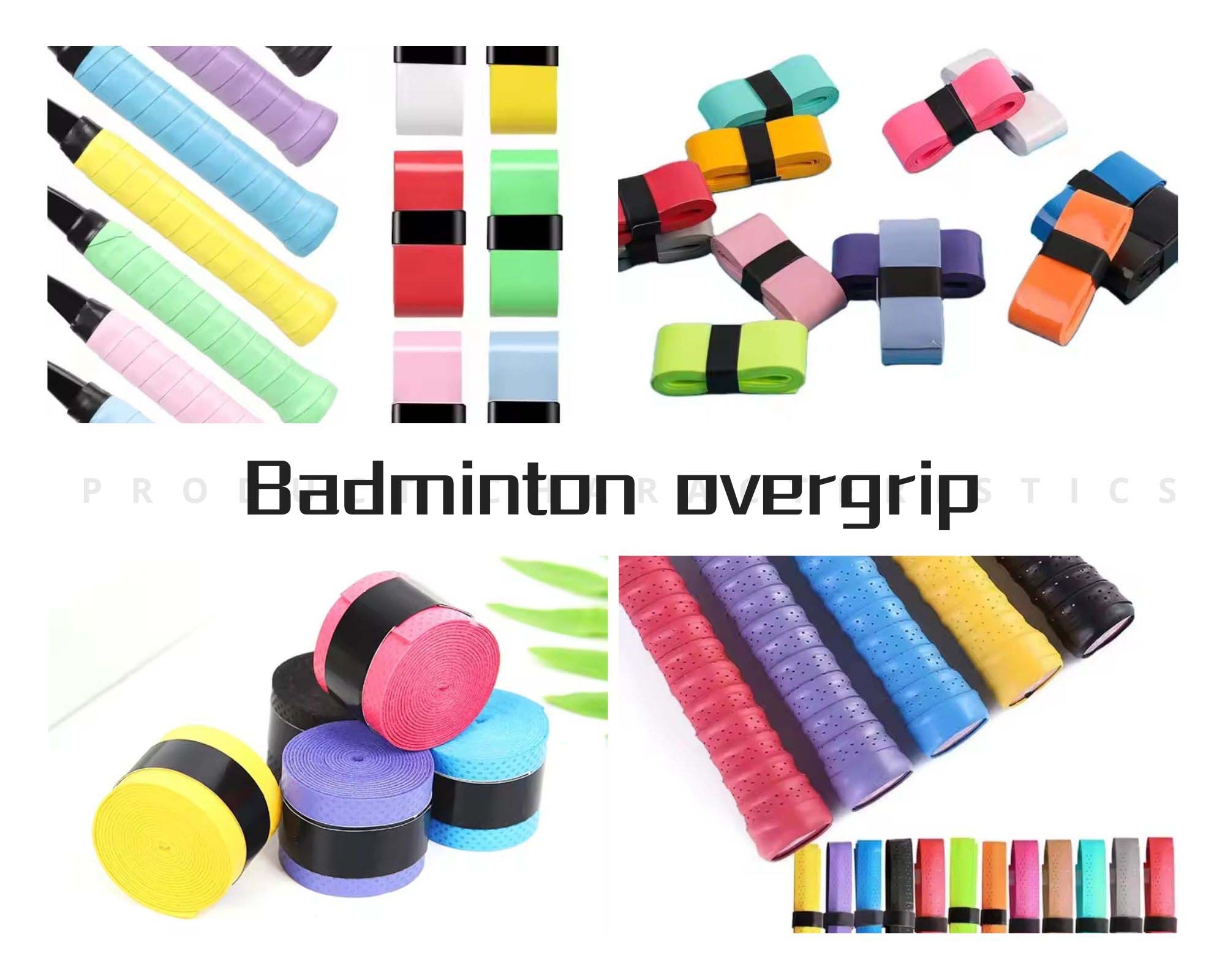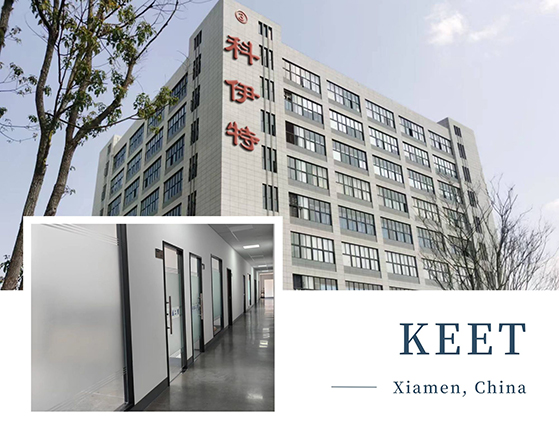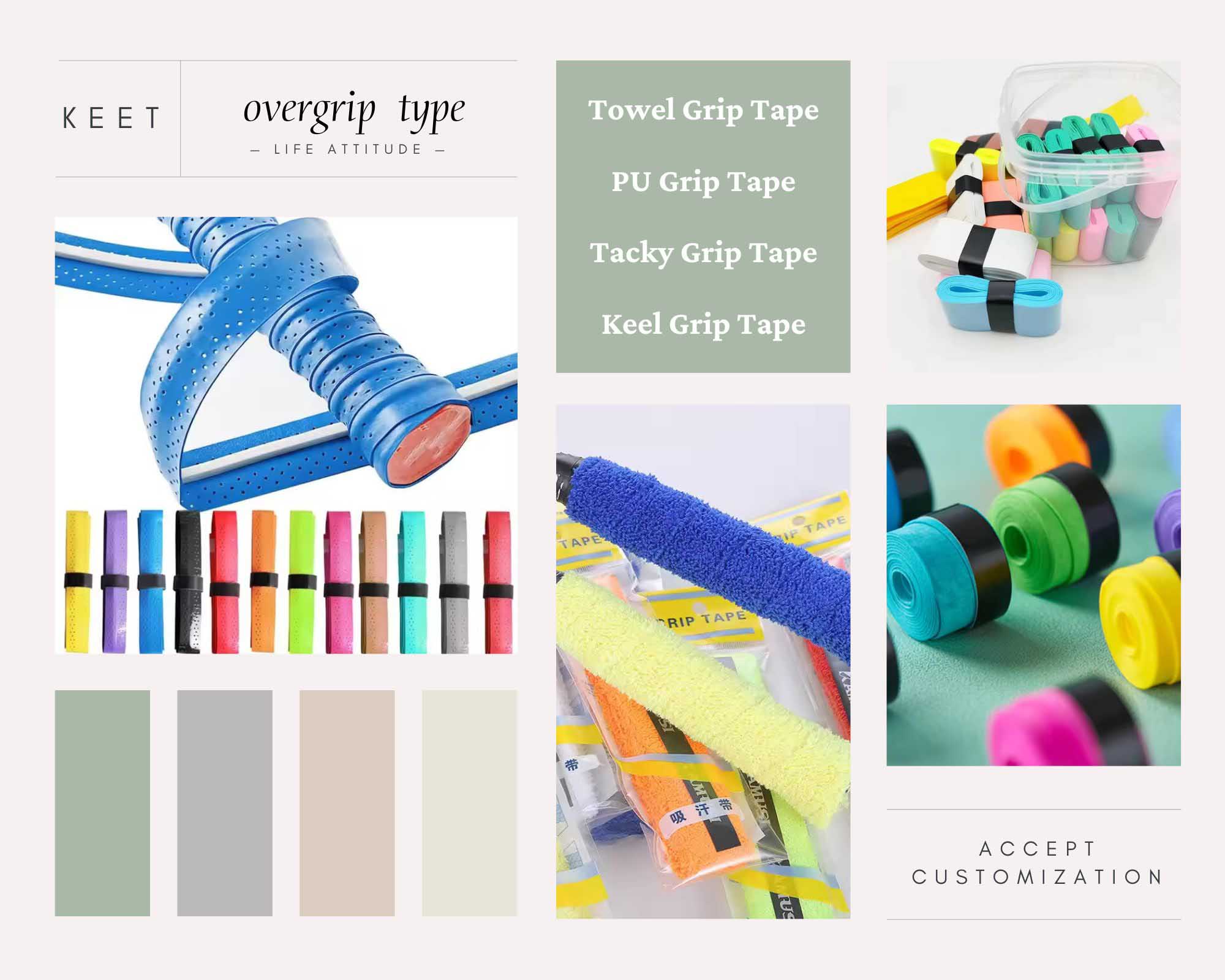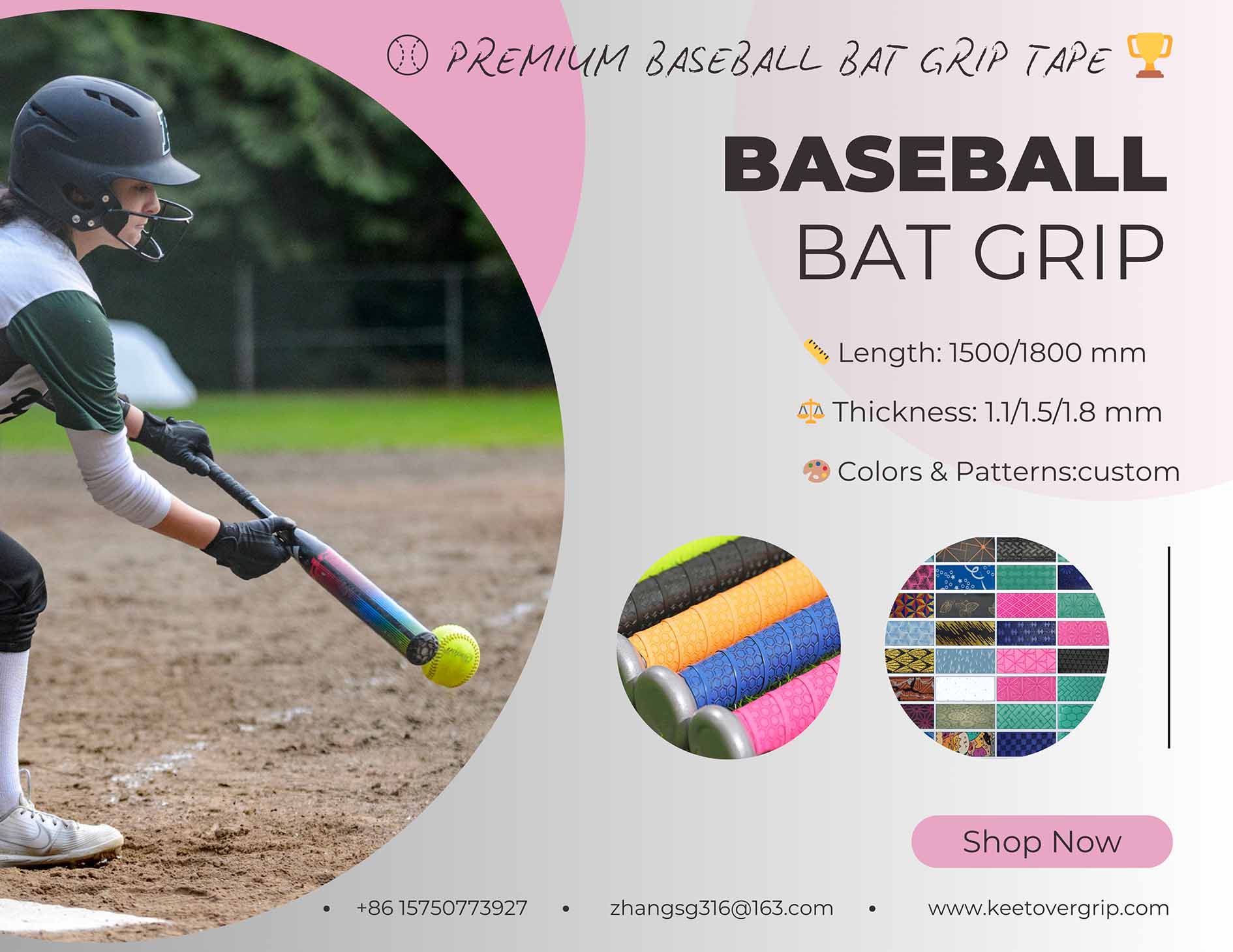In ball-related sports such as badminton, tennis, and pickleball, overgrips are indispensable accessories for rackets. Though they may seem inconspicuous, they have a crucial impact on an athlete's grip experience, hitting effectiveness, and even sports safety. However, many sports enthusiasts often overlook the issue of overgrip replacement and lack a clear understanding of how frequently they should be changed and the necessity of doing so. So, how often should overgrips be replaced? And why is it necessary to replace them frequently?
I. Frequency of Overgrip Replacement
The replacement time for overgrips is not fixed, it is influenced by a variety of factors. Here are some common reasons:
1.Personal Usage Habits and Intensity of Exercise
· High-frequency Users: For pro fessional athletes or seasoned enthusiasts who engage in high-intensity ball sports almost every day, the wear rate of overgrips significantly accelerates. Generally, this group of people may need to replace their overgrips every 1 - 2 weeks to ensure a consistently good grip feel.
· Low-frequency Users: If a beginner only plays occasionally on weekends or during leisure time, the usage frequency of the overgrip is relatively low, and the degree of wear is also lighter. In this case, the lifespan of the overgrip will be extended accordingly, and replacing it approximately every 1 - 2 months is sufficient. However, even with a low usage frequency, if the overgrip develops an unpleasant odor, undergoes severe deformation, or affects the stability of the grip, it should be replaced promptly.
2.Environmental Factors
· Hot and Humid Environments: When playing in the scorching heat of summer or in a humid indoor venue, the palms tend to sweat profusely. The sweat can seep into the overgrip, making it damp and sticky. This not only reduces the comfort of the grip but also speeds up the aging and deterioration of the overgrip. In addition, humid environments are prone to the growth of bacteria and mold, which can produce foul odors and be detrimental to health. Therefore, when playing in hot and humid conditions, it is recommended to replace the overgrip every 1 - 2 weeks.
· Dry Environments: In dry seasons or indoor venues with good air circulation, the palms sweat relatively less, reducing the likelihood of the overgrip getting damp. In such cases, the usage time of the overgrip can be appropriately extended, but its condition still needs to be checked regularly. Generally, replacing it every 2 - 3 months is more appropriate.
3.Material and Quality of Overgrips
· Ordinary-material Overgrips: Some overgrips on the market with relatively low prices are made of ordinary materials and have poor sweat-absorption, anti-slip, and durability properties. After being used for a period of time, these overgrips are prone to problems such as slipping and deformation, requiring more frequent replacement. Usually, they may need to be replaced every 2 - 3 weeks.
· High-quality Overgrips: High-quality overgrips are typically made of special materials and have excellent sweat-absorption, anti-slip, breathability, and durability. They can better adapt to different sports environments and the condition of the palm, with a relatively long lifespan. For high-quality overgrips, it is feasible to replace them after 1 - 2 months or even a longer period, but the specific time should still be judged based on actual usage.
II.Necessity of Frequent Overgrip Replacement
1.Enhancing Grip Comfort
One of the main functions of an overgrip is to provide a comfortable grip experience for the palm. As the usage time increases, the surface of the overgrip gradually wears out, becoming rough and uneven, and may even fray or shed flakes. Replacing the overgrip in a timely manner can keep its surface smooth and soft, allowing the palm to fit better with the racket, thereby reducing the burden on the hand and improving grip comfort.
2.Improving Anti-slip Performance
In intense ball sports, rapid swings and powerful hits are common movements, which require the racket to have good anti-slip properties to ensure that athletes can control the racket steadily. When the overgrip absorbs a large amount of sweat or becomes stained with dust and dirt, its surface becomes slippery, greatly increasing the risk of the racket slipping out of the hand. Replacement overgrip can ensure that the overgrip always has excellent anti-slip effects, allowing athletes to play with more confidence, avoid mistakes or injuries caused by the racket slipping out of the hand.
3.Maintaining Hygiene and Health
Overgrips come into direct contact with the palm and absorb a large amount of sweat and sebum. If the overgrip is not replaced for a long time, the sweat and sebum can become a breeding ground for bacteria and mold, producing unpleasant odors and potentially causing hand skin infections, allergies, and other problems, posing a threat to the athlete's health. Regular overgrip replacement can effectively reduce the growth of bacteria and mold, keep the overgrip clean and hygienic, and create a healthy environment for the hand.
4.Prolonging the Lifespan of Rackets
Although overgrips themselves are not core components of rackets, their protective effect on rackets should not be ignored. A suitable overgrip can cushion the pressure between the palm and the racket, reducing the damage to the racket handle caused by friction and impacts. Often replacement overgrip can prolong the lifespan of the racket and save athletes the cost of replacing rackets.
Although overgrips are small accessories, they are closely related to the sports experience and health and safety. Understanding the frequency of overgrip replacement and the necessity of frequent replacement, and arranging the replacement time reasonably according to one's own actual situation, are issues that every ball-sports enthusiast should pay attention to. Only in this way can we ensure our hand health and the good condition of the racket while enjoying the fun of sports.




